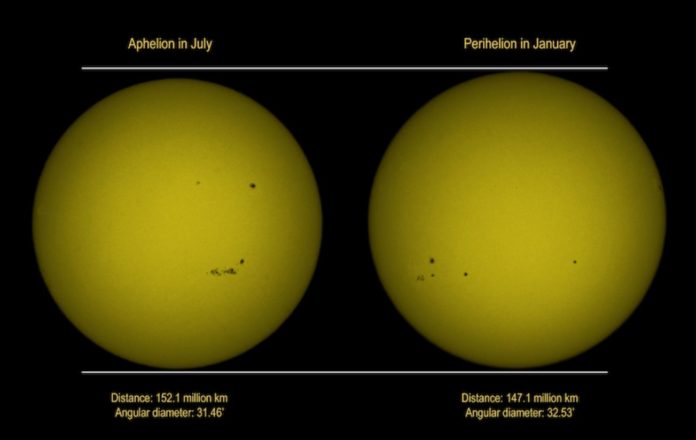On January 4, 2022, the Earth will reach its perihelion, the point in its orbit where it is closest to the Sun. This results in a 3,420 km/h increase in orbital speed.
The Earth orbits the Sun in an elliptical orbit of 930 million kilometers at an average speed of 107,280 kilometers per hour, which equates to covering the distance every 365 days and nearly 6 hours, and so one every four years is counted. jump.
However, according to Kepler’s second rule, this translation speed varies, reaching a maximum of 110,700 kilometers per hour at perihelion – the closest point to the Sun – and falling to a minimum of 103,536 kilometers per hour at aphelion, a difference of more than 7,000 kilometers per hour.
The perihelion of 2022 will take place at 06.52 UTC on January 4, with a distance of just over 147 million kilometers, according to Earth Sky. And the aphelion will occur on July 4, which will be around 5 million kilometers away.
The line linking the planets to the Sun, as discovered by Kepler, spans the same area in the same period of time. Thus, the planets move more quickly when they are closer to the Sun in their orbit than when they are further away.
So at a higher distance from the Sun, the orbital speed of a planet will be slower, while at a shorter distance from the Sun, the orbital speed will be faster.
The average distance between the Earth and the Sun is approximately 150 million kilometers. During the aphelion, it travels 152.09 million kilometers, and during the perihelion, it travels 147.10 million kilometers away.
The 30-second YouTube video embedded below demonstrates how a planetary body accelerates towards perihelion and slows down near aphelion in its orbit. It’s produced by Kepler’s second law of planetary motion, which states that a line connecting the sun and a planet sweeps away equal areas in similar amounts of time on both sides of the line.
Image Credit: EarthSky
You were reading: Earth to swing closest to the sun on January 4: Everything you should know
